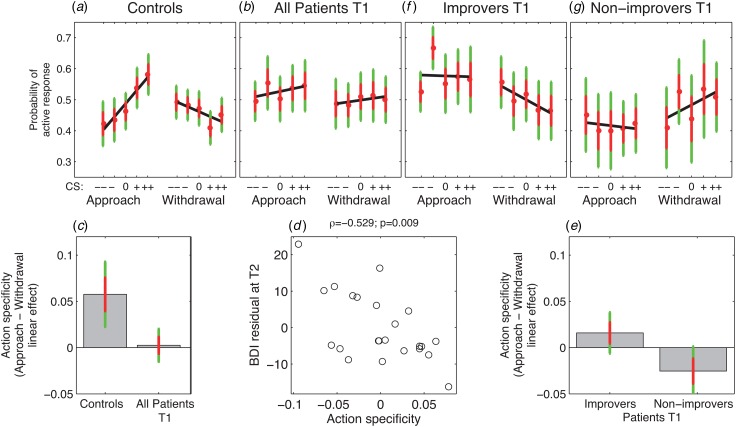Fig. 3.
Pavlovian-instrumental transfer (PIT) data. (a) Choice data for control subjects show an action specificity, i.e. the valence of Pavlovian conditioned stimuli (CSs) is positively related to an active response during approach, but negatively during withdrawal (p = 0.002). (b) In major depressive disorder patients, PIT effects during approach and withdrawal did not differ, i.e. PIT effects are not action-specific (p = 0.7). (c) Action specificity (difference in linear CS valence effects between approach and withdrawal conditions) is trend-wise greater in controls than patients at T1 (p = 0.07). (d) The strength of action specificity correlates negatively with residual Beck Depression Inventory (BDI) score at follow-up T2, i.e. after correcting for BDI score at T1 (ϱ = −0.53, p = 0.009). (e) Action specificity is greater in those patients who go on to improve at follow-up compared with those who do not (p = 0.04). (f) and (g) PIT effects at T1 for improvers (f) and non-improvers (g). In panels (a), (b), (f) and (g), red dots show means, red error bars 1 standard error, green error bars 95% confidence intervals, and black lines are linear regressions (see online for the colour version of the figure).

